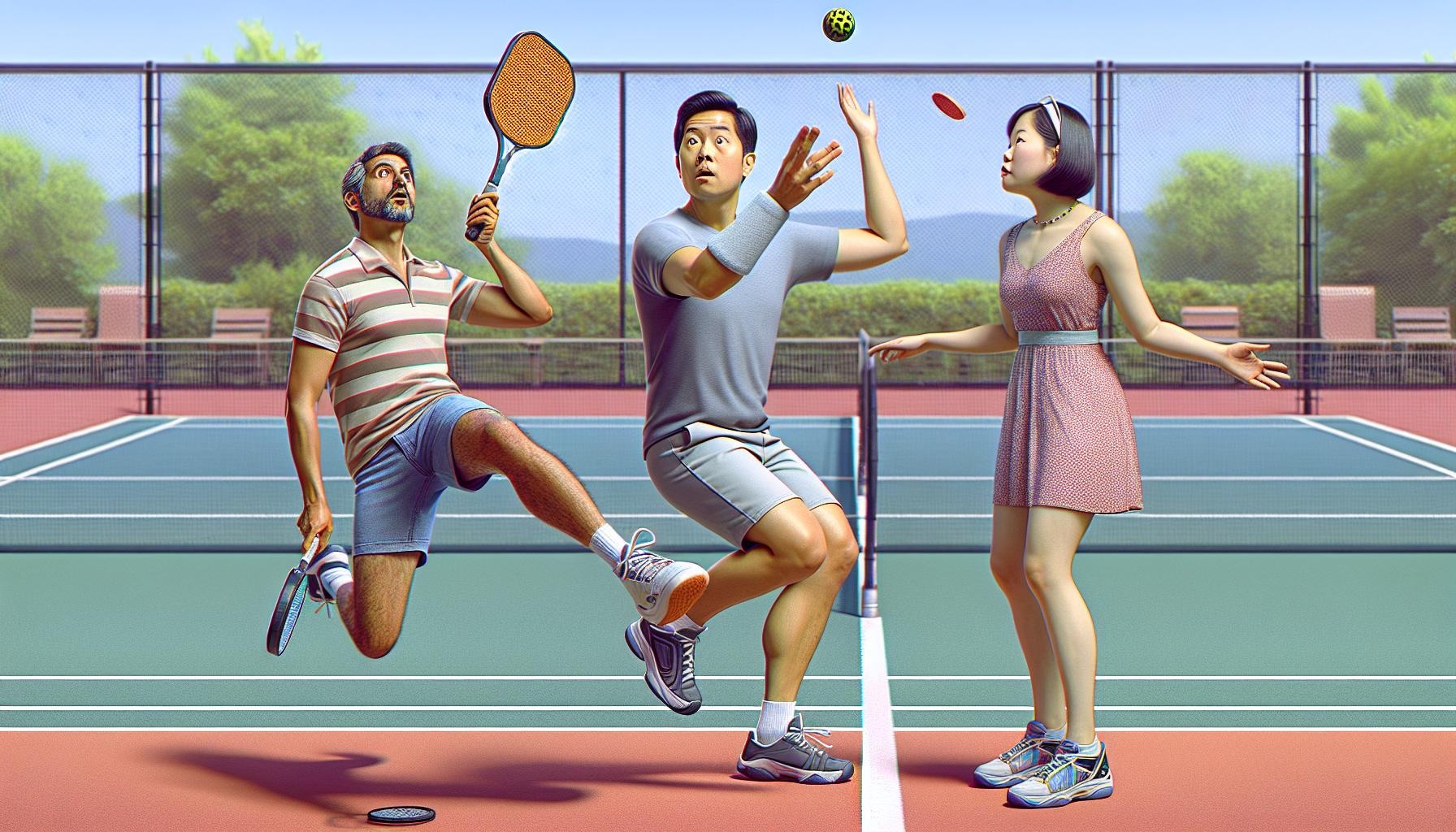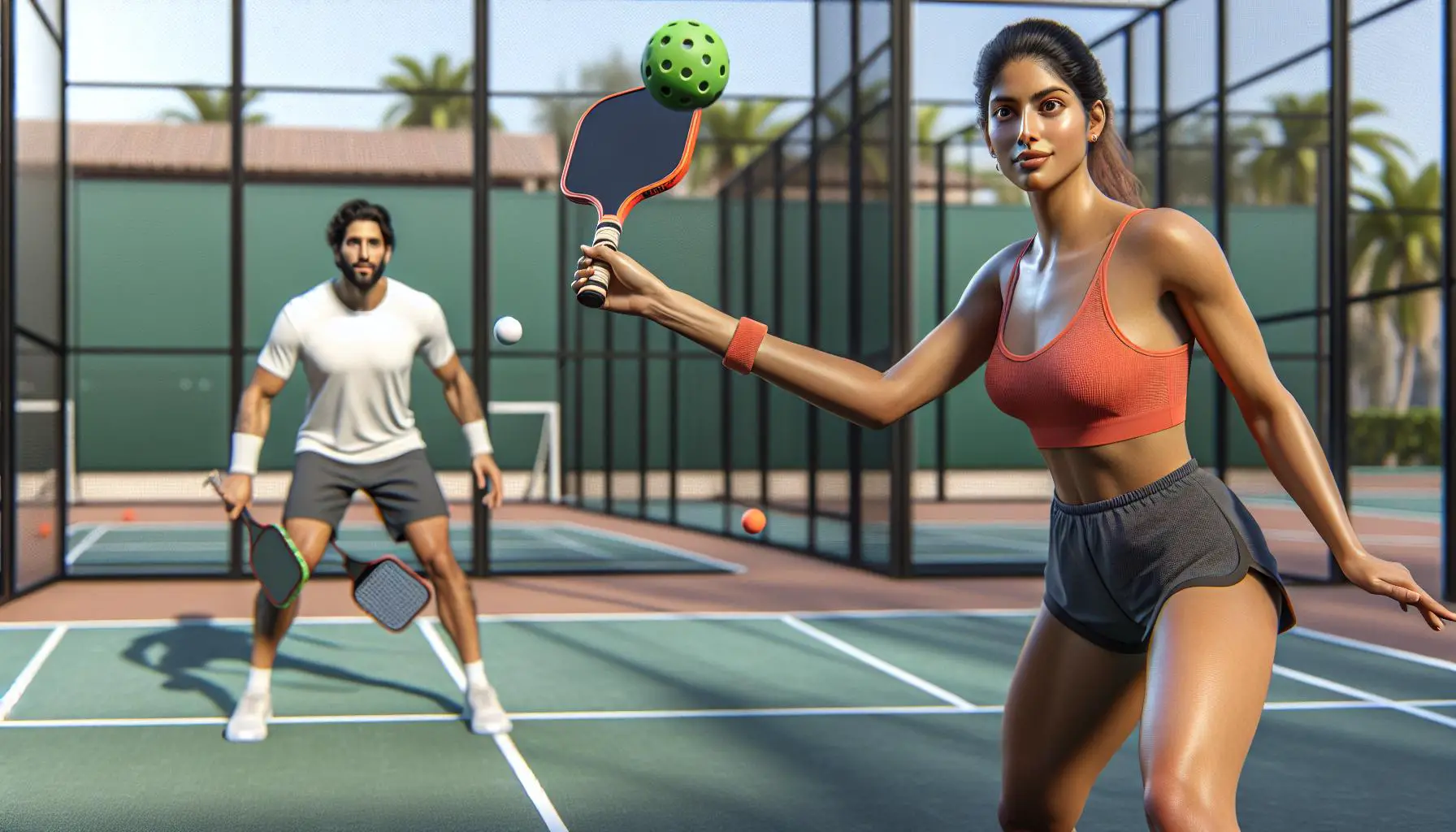Pickleball’s popularity is soaring, and with more people hitting the courts, understanding the rules has never been more crucial. Among these, the concept of a fault plays a pivotal role in how the game unfolds. But what exactly is a fault in pickleball, and why does it matter so much?
A fault in pickleball can turn the tide of the game, impacting both newbies and seasoned players alike. It’s those moments that can either lead to a triumphant win or a learning opportunity. Let’s dive into the nitty-gritty of faults in pickleball, shedding light on how they’re defined and their consequences on the game.
The Significance of Understanding Faults in Pickleball
Grasping the concept of faults in pickleball is not just about knowing the rules, it’s about enhancing one’s game to its fullest potential. For both beginners and seasoned players, a clear understanding can be the difference between a winning streak and a learning curve. In pickleball, like in many racket sports, a fault serves as a fundamental rule that governs the flow of play, impacting the game’s outcome significantly.
First and foremost, comprehending faults helps players avoid common mistakes, thereby improving their gameplay. Knowing the specifics, such as foot faults, serve faults, and non-volley zone faults, allows players to refine their skills in serving, volleying, and movement. Each fault type has distinct characteristics and rules governing it, making it crucial for players to familiarize themselves with these details.
- Foot Faults: Occur when a player steps into the non-volley zone during the serve.
- Serve Faults: Happen when the ball is hit out of bounds or not cleared over the net.
- Non-Volley Zone Faults: Arise when a player volleys the ball while standing in the non-volley zone.
Beyond personal improvement, understanding faults encourages fair play and sportsmanship among competitors. By adhering to the rules, players demonstrate respect for their opponents, officials, and the spirit of the game itself. This mutual respect fosters a positive environment where competition thrives, but not at the expense of camaraderie and enjoyment.
Furthermore, knowledge of faults is indispensable for strategic gameplay. Players who are well-versed in fault rules can exploit certain situations to their advantage. For example, a player could strategically place shots to make it challenging for their opponent to return the ball without committing a fault. This level of strategy adds depth to pickleball, making it not only a physical contest but also a mental one.
In competitions, the stakes are even higher. Faults can lead to points, games, or even matches being lost, highlighting their impact on a player’s competitive journey. Awareness and avoidance of faults can be particularly crucial in close matches where every point counts. Players who can navigate the intricacies of fault rules confidently are often those who find themselves on the winning side more often.
Defining a Fault in Pickleball
Understanding what constitutes a fault is fundamental to mastering pickleball. A fault is any action or scenario that violates the official pickleball rules, leading to a stop in play and a change of service. It’s essential for players at all levels to recognize and avoid faults to maintain the flow of the game and uphold sportsmanship.
Types of Faults in Pickleball include but aren’t limited to:
- Foot Faults: Occur when a player steps into the non-volley zone during a serve or violates the service area rules.
- Serve Faults: These happen when the serve does not follow the diagonal service box without bouncing or the ball hits out of bounds.
- Non-Volley Zone Faults: Any player stepping on or inside the non-volley zone line during a volley shot commits a fault.
Each type of fault directly impacts the game, potentially shifting momentum or deciding the outcome of competitive matches. Moreover, avoiding faults not only keeps the game moving but also encourages a higher level of play.
How Faults Affect Gameplay
Faults can dramatically alter the course of a pickleball game. When a fault occurs, the serving side typically loses the serve, handing it over to the opposing team. This rule keeps the game fair and competitive, as it penalizes mistakes and rewards precision and skill.
In addition to serving turnovers, faults can also lead to:
- Disruption of Play: Faults disrupt the flow, forcing players to reset and strategize anew.
- Psychological Impact: Repeated faults can intimidate players, affecting their confidence and performance.
- Strategic Shifts: Experienced players use faults to their advantage, adjusting their strategy to exploit opponents’ weaknesses.
Strategies to Minimize Faults
Minimizing faults is key to improving and maintaining an advantageous position during play. Players can adopt several strategies to reduce the likelihood of faults:
- Practice and Familiarity: Regular practice helps players internalize the dimensions of the court and the nuances of serving and volleying within the rules.
- Mindful Movement: Being conscious of one’s positioning, especially near the non-volley zone, can prevent many common faults.
- Consistent Serving: Developing a consistent and rule-compliant serve minimizes serve faults, keeping the serve in one’s favor for longer periods.
Types of Faults in Pickleball

In pickleball, a fault is any action that violates the rules of the game, leading to a halt in play and a point or service loss for the offending team. Understanding the different types of faults in pickleball is crucial for both new and seasoned players. Here, we dive into the common faults that can occur during a pickleball game.
Serve Faults
A serve in pickleball must follow specific rules to be considered valid. Some of the primary serve faults include:
- Serving before the receiver is ready, which goes against the principle of sportsmanship in the game.
- Stepping on or over the baseline during the serve. The server’s feet must be behind the baseline until they hit the ball.
- Hitting the ball out of bounds. The ball must land in the diagonal service box opposite the server.
- Failing to hit the ball over the net. This includes serves that hit the net and fall back on the server’s side or don’t clear the net at all.
Non-Volley Zone Faults
The non-volley zone, also known as the kitchen, is a seven-foot area extending from the net on both sides. Players are not allowed to volley the ball—that is, hit the ball out of the air before it bounces—while standing in this zone. Non-volley zone faults occur when:
- A player steps into the non-volley zone and volleys the ball.
- A player’s momentum from a volley shot carries them into the non-volley zone.
- Any part of a player’s body or paddle touches the non-volley zone during a volley shot.
Foot Faults
Similar to tennis, pickleball has specific rules about foot placement. Foot faults in pickleball generally involve players’ feet position when serving or stepping into the non-volley zone during volleys. Key instances include:
- The server’s foot enters the court before the serve is completed.
- A player’s foot enters the non-volley zone before they strike the ball on a volley shot.
- Hitting the ball twice or carrying it with the paddle.
- The ball hitting any part of the play area outside the court boundaries.
- **Hitting
Consequences of Committing a Fault in Pickleball

When a player commits a fault in pickleball, the effects on the game can be immediate and impactful. Understanding these consequences is essential for players who aim to play effectively and avoid common mistakes.
Loss of Service occurs when the serving player or team commits a fault. In pickleball, the service advantage is significant because the serving team can score points. A service fault transfers this advantage to the opponents, offering them an opportunity to score and shift the game’s momentum.
Point Awarded to the Opponent: If the receiving team is at fault, the serving team is awarded a point. This rule underscores the importance of being ready and avoids any action that could result in a fault while receiving. Points are precious in pickleball, and players strive to minimize errors that lead to their opponents scoring.
In the case of a Side Out, which happens when the serving team commits a fault after their initial serve, the serve switches to the opposing team. This transition can significantly affect the game flow, especially in close matches where serve possession is crucial.
Double Faults are particularly discouraging. If both members of the serving team commit faults consecutively, the result is a double fault, leading to a direct side out. This penalty underscores the need for teamwork and communication in doubles play.
It’s also worth noting the impact of faults on a player’s Mental Game. Repeated faults can lead to frustration and a loss of focus, affecting overall performance. Players often work on mental resilience and strategy to mitigate the psychological effects of committing faults.
To illustrate the impact of faults on game outcomes, consider the following data on match results where faults played a significant role:
| Match Scenario | Serving Team Faults | Receiving Team Faults | Outcome |
|---|---|---|---|
| High-Stakes Tournament Game | 5 | 3 | Serving team lost |
| Friendly Club Match | 2 | 8 | Receiving team lost |
| Regional Championship | 4 | 4 | Determined by final rally |
These examples highlight how faults, whether from the serving or receiving team, can tip the scales in pickleball matches. Players and coaches analyze such data to develop strategies that minimize faults, understanding that each error can move the opposing team closer to victory.
Mastering the Rules to Minimize Faults

Understanding and mastering the rules of pickleball can significantly reduce the number of faults a player commits, leading to more enjoyable and successful games. Learning the intricacies of the sport isn’t just about knowing when to hit the ball but also involves comprehension of what constitutes a fault and how to avoid it.
Key rules to keep in mind include the two-bounce rule, the non-volley zone rule (also known as the kitchen), and service regulations. These form the crux of most faults that players, especially beginners, tend to commit.
- The two-bounce rule requires that the ball bounces once on each side of the net before players can begin volleying it in the air. This rule is designed to extend rallies and give teams a fair chance to respond.
- The non-volley zone, or the kitchen, is a seven-foot area on both sides of the net. Players are not allowed to volley the ball—that is, hit it without letting it bounce—while standing in this zone. This rule prevents players from dominating the game by smacking high-speed shots at close range.
- Service regulations in pickleball are strict. The ball must be hit underhand with the paddle below the waist, and the service must diagonal crosscourt. Moreover, the ball must land within the bounds of the opposite diagonal court.
Practicing and internalizing these rules can dramatically reduce the instances of faults during a game. Players should also pay close attention to their footing, especially when near the non-volley zone. It’s easy to step into the kitchen inadvertently during the heat of play, resulting in a fault.
Advanced players often leverage drills and practice sessions to refine their understanding and adherence to pickleball rules. For example, many coaches set up exercises that simulate game scenarios focusing on the non-volley zone and service, allowing players to hone their skills in a controlled environment.
In addition, engaging in practice games where the sole focus is on avoiding specific types of faults can be beneficial. These sessions allow players to identify when they’re most likely to commit faults and work on strategies to mitigate them. Whether it’s improving service accuracy to avoid foot faults or practicing shots near the kitchen line to prevent non-volley zone violations, dedicated practice makes a difference.
Staying updated with rule changes is also crucial as pickleball evolves. The governing bodies may adjust rules to enhance the sport’s fairness or accessibility.
Conclusion
Mastering the ins and outs of pickleball faults is crucial for anyone looking to up their game. Whether you’re a beginner or an advanced player, understanding and practicing the key rules like the two-bounce rule and the non-volley zone can significantly cut down on mistakes. It’s not just about knowing what the rules are but also putting them into practice through drills and game simulations. As the sport continues to grow and evolve, staying on top of rule changes will keep you ahead of the game. So grab your paddle, hit the court, and remember—every fault is a step toward becoming a better player.














0 Comments